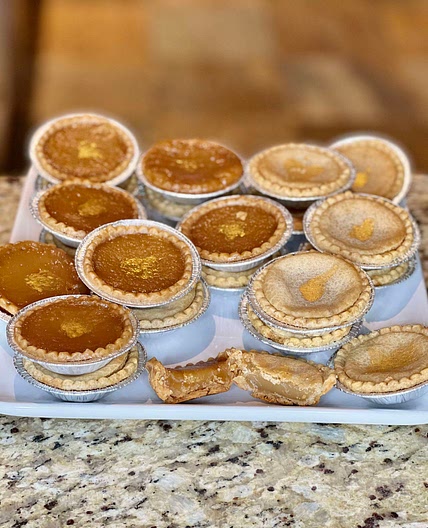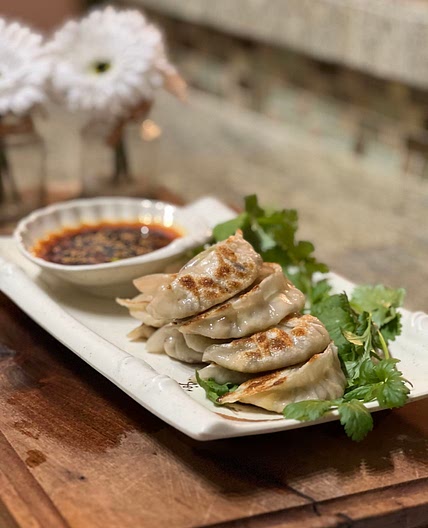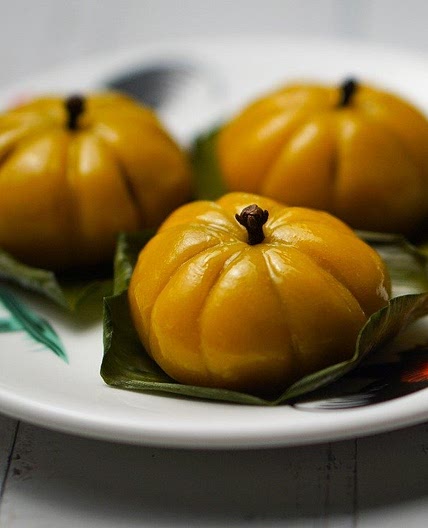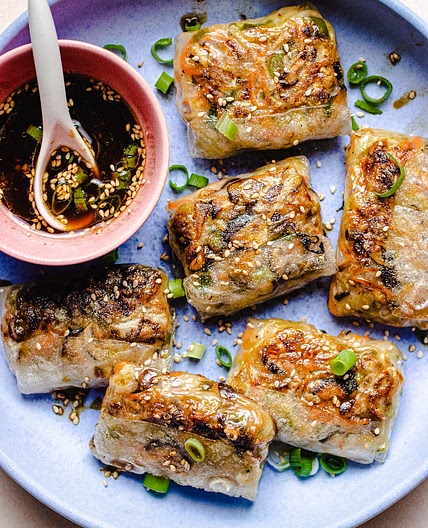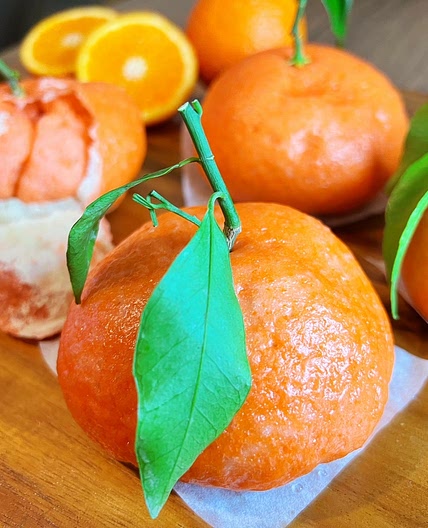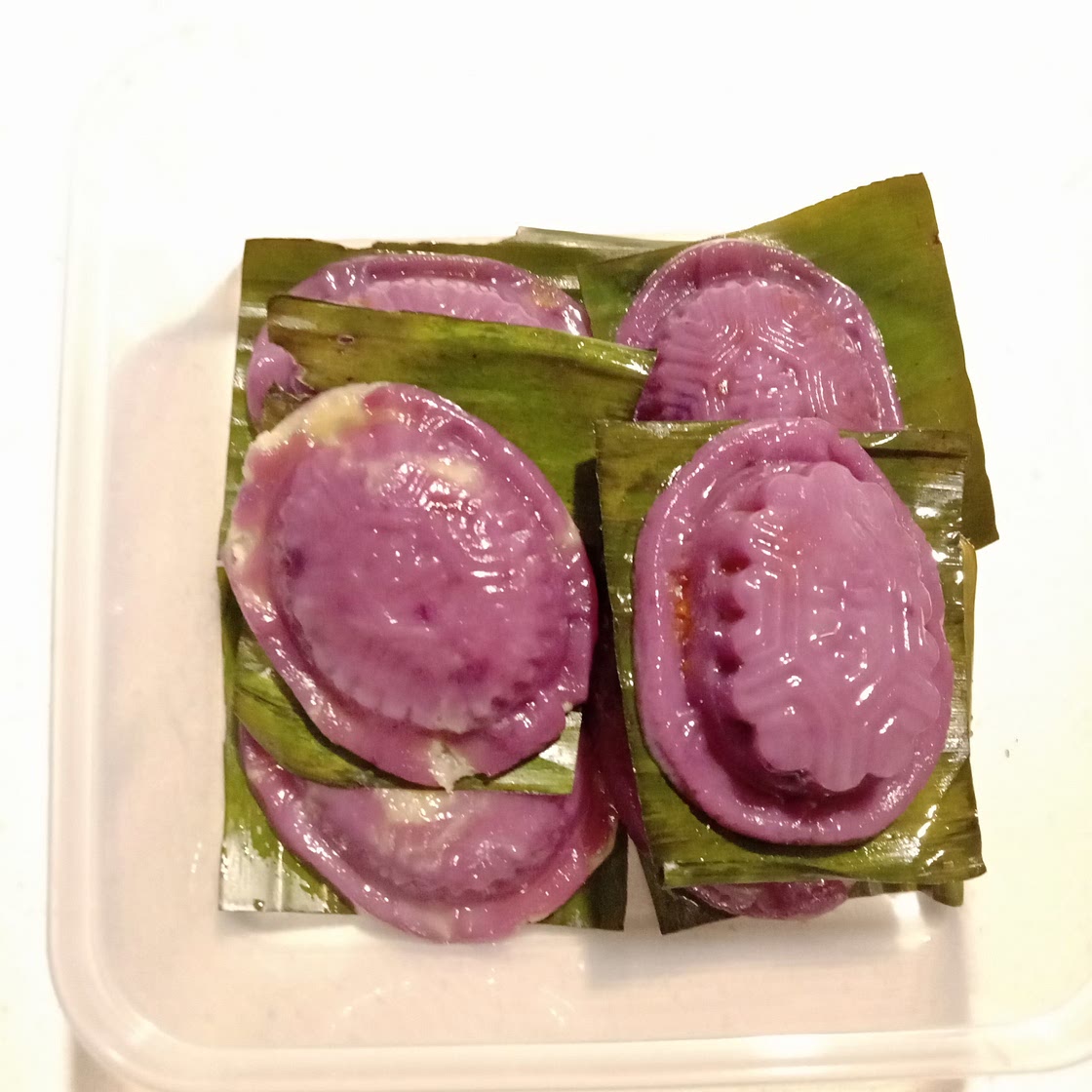
1/2
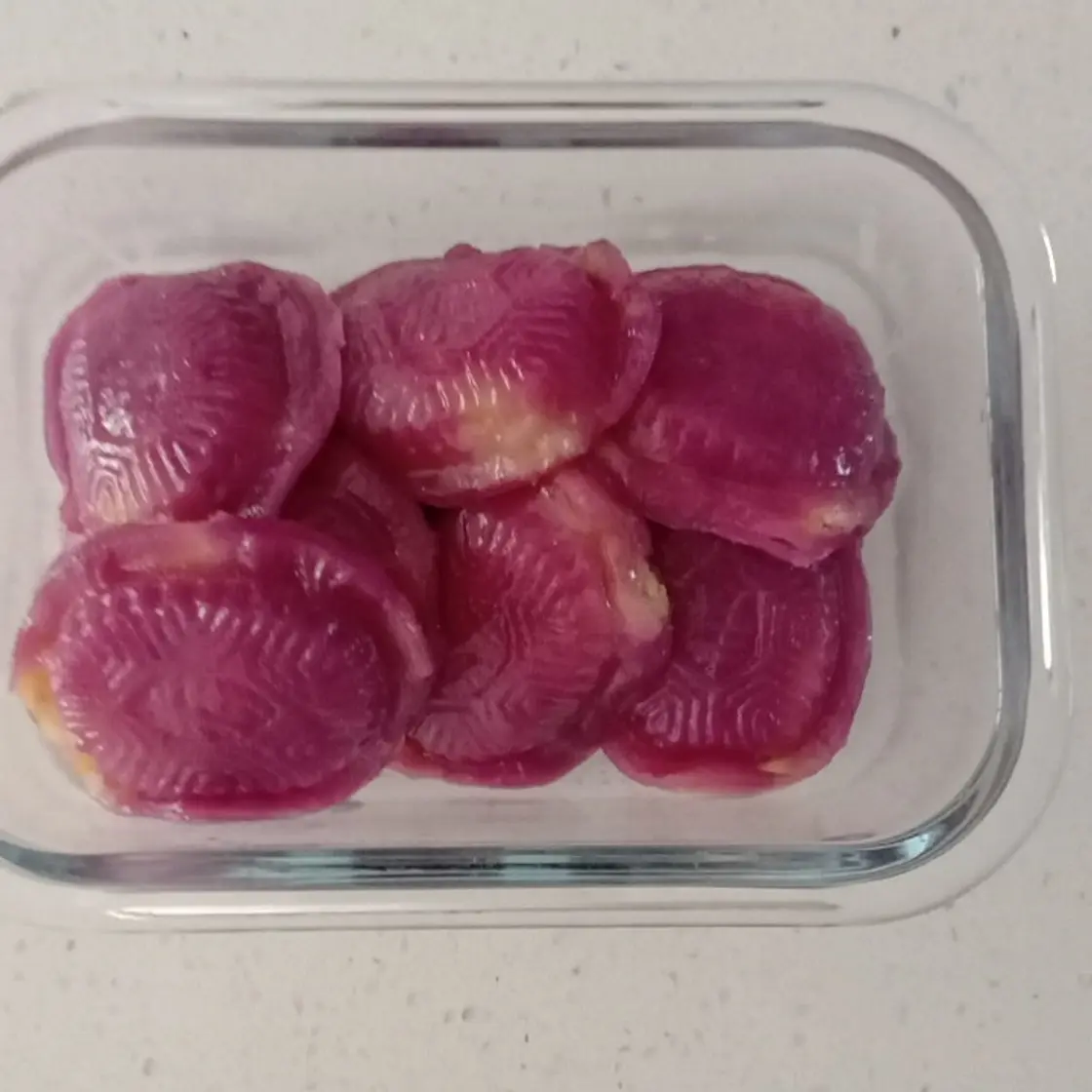
2/2
100%
1
By Daniel Koh
Singapore Mung Bean Pastry (a.k.a Ang Ku Kueh)
18 steps
Prep:10hCook:1h
Famously known as the Red Tortoise Cake, this is a childhood comfort food for those who grew in Singapore. It has a mochi-like skin, with a variety of fillings such as Mung Beans.
Updated at: Thu, 17 Aug 2023 10:37:55 GMT
Nutrition balance score
Good
Glycemic Index
60
Moderate
Glycemic Load
34
High
Nutrition per serving
Calories352.6 kcal (18%)
Total Fat10.5 g (15%)
Carbs56.6 g (22%)
Sugars20.6 g (23%)
Protein7.8 g (16%)
Sodium35.8 mg (2%)
Fiber4.5 g (16%)
% Daily Values based on a 2,000 calorie diet
Ingredients
6 servings
Dough
102gpurple sweet potato
steam, mashed
144gglutinous rice flour
24gfine sugar
21goil
not olive oil
108mlwater
Mung Bean Filling
Instructions
Step 1
Wash and drain mung beans 5 times till water becomes clear. Soak the Mung Bean in 190ml water overnight.
On the next day
Step 2
Steam purple sweet potato and mash it while it is still hot with a fork. Be careful with the heat - for safety, wear a pair of gloves.
Step 3
In a mixing bowl, combine 144g glutinous rice flour, 24g sugar, 21g oil, 108g water and mashed sweet potato with your hand. Mix it evenly and form a ball of dough. [9 December 2021: Set aside another 50g of glutinous rice flour just in case it's too wet. The texture you are expecting should be not sticky on your palm when it is rolled into a ball, but slightly sticks to your palm when it is pressed down. (くっつくかくっつかないかぐらい ) - as in sticks for few seconds and it falls off.]
Step 4
Roll the dough into 22g balls and set aside. COVERED. You should have about 18 balls. This proportion is suitable for the standard size of Ang Ku Kueh in the market. [9 December 2021: I used the smallest mold, so I rolled to 11g balls and 9g of mung beans filling.]
Step 5
Transfer the mung beans with water (the beans and water together) into a pan. Add 90g sugar and pinch of salt into the mixture and bring to boil. Once it has started to boil, turn down to low heat and cover for about 40 mins till soft. Stir the mixture occasionally to prevent it from sticking to the bottom of the pan. The water should also be completely absorbed at the end. [9 December 2021: I didn't stir frequent enough, hence the beans stuck to the pot. At the end, there were more dough than filling. Make sure that the beans are frequently stirred to prevent from sticking to the pot.]
Step 6
Transfer the puree into a food processor and add 40g of oil. Process it till it becomes smooth. If the paste is too wet, stir fry over low heat gently on a non-stick pan for about 5 minutes till it becomes dry. [9 December 2021: In my opinion, it is better to stir fry a little even though it is perfect. It seems like stir frying a little helps to enhance the taste and fragrance.]
Step 7
Cool the paste down and roll to 20g balls. Set aside. [9 December 2021: For the 11g dough balls, I used 9g of filling. This is for the smallest mold.]
Step 8
Clean the banana leaves with a wet cloth. [9 December 2021: It is recommended to use the banana leaves. I did not use banana leaves and I felt something was missing - the biting down of the pastry wasn't very fragrant as I expected.]
Step 9
Cut out the banana leaves into squares and lay on steamer tray. Brush with a thin layer of oil over the banana leaves.
Step 10
Using each individual ball of dough, press it down firmly on your palm. [9 December 2021: Use the tip of your fingers to press the dough and expand the dough further. Expand the dough to the point where it almost tear but intact.]
Step 11
Put a ball of mung bean filling inside and enclose while rolling to become a round ball.
Step 12
Dust the ang ku kueh mold and press the filled dough inside it LIGHTLY.
Step 13
Invert and knock the pastry out GENTLY. [9 December 2021: I knocked it quite hard this time round, as I realized the dough is too light when the smallest mold is used. Presumably, by law of physics, the heavier doughs have lower center of gravity. Hence when inverted, the center of gravity is shifted nearer to the table. Once it is knocked, the force applied to reach that center of gravity is higher. Therefore it is easier to gently knock when the mold is bigger/dough is heavier.]
Step 14
Place the ang ku kueh on the banana leaf squares.
Step 15
Repeat for the rest of the dough and fillings.
Step 16
![Place the ang ku kueh in a bamboo basket and then place the basket into the steamer. Take note that the bamboo basket is a necessary tool to be used if you want balanced steaming. [9 December 2021: I didn't use the bamboo basket - I think it's fine to just steam it using the wok and stand.]](https://art.whisk.com/image/upload/fl_progressive,h_600,w_600,c_limit,dpr_2.0/v1638628374/v3/user-recipes/kftypoz8t4xdzqgjks2y.jpg)
Place the ang ku kueh in a bamboo basket and then place the basket into the steamer. Take note that the bamboo basket is a necessary tool to be used if you want balanced steaming. [9 December 2021: I didn't use the bamboo basket - I think it's fine to just steam it using the wok and stand.]
Step 17
Steam for 20 minutes. Make sure that the water is boiling before you start steaming the pastry. [9 December 2021: As the mold which I used is the smallest, the steaming time required is also lesser. I tried 15 minutes once and I over-steamed it. The perfect timing is 13 minutes if you use the smallest mold.]
Step 18
Once ang ku kueh is out of the steamer, brush with some oil to prevent the kueh from sticking to your fingers. [9 December 2021: Ideally, use vegetable oil. If there's no vegetable oil, use cooking oil BEFORE YOU STEAM. The texture is slightly different - the ones with oil on it before steaming will have glossier texture, which is slightly overkill.]
Notes
1 liked
0 disliked
Delicious
Go-to
Moist
Sweet


